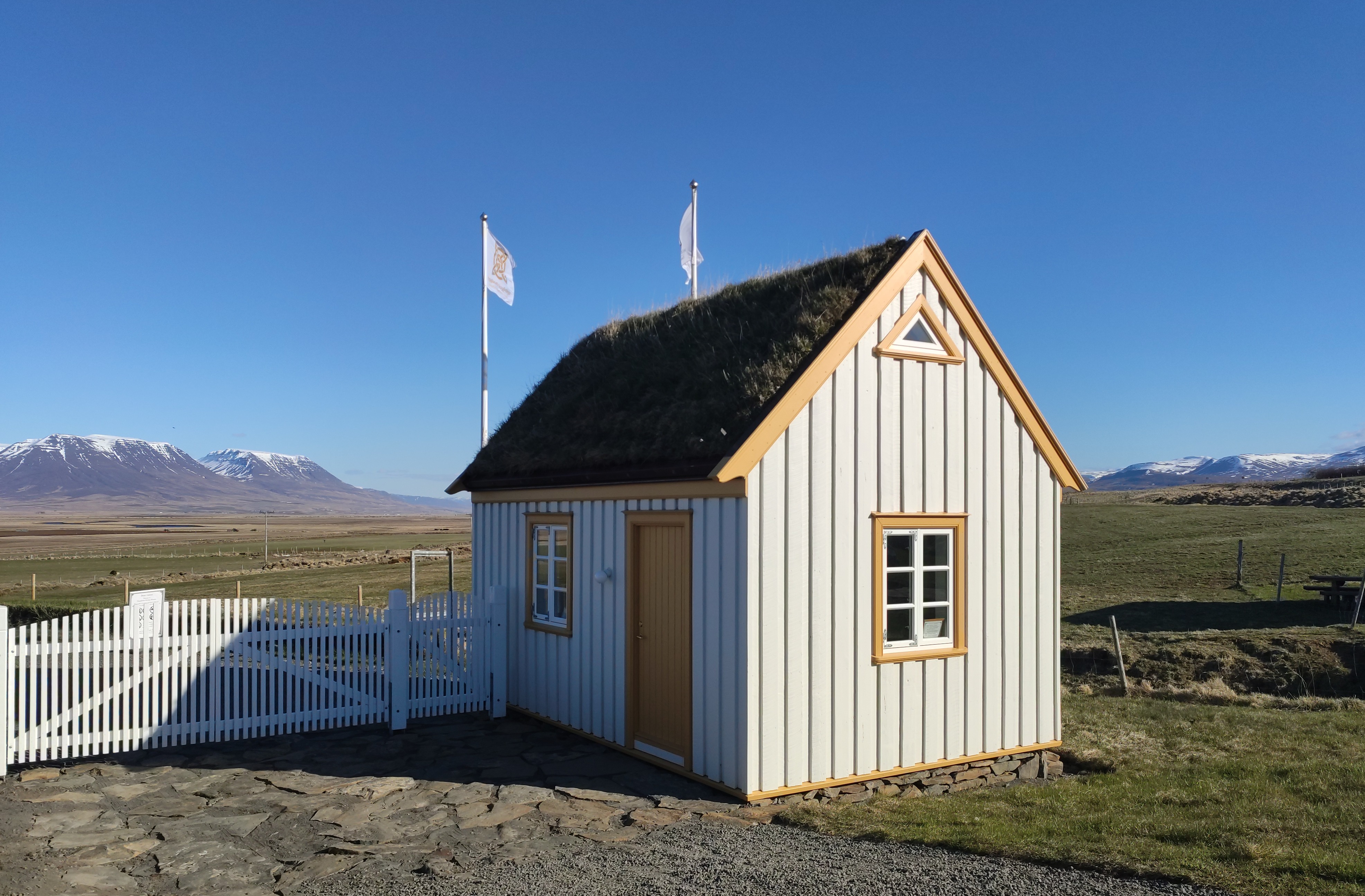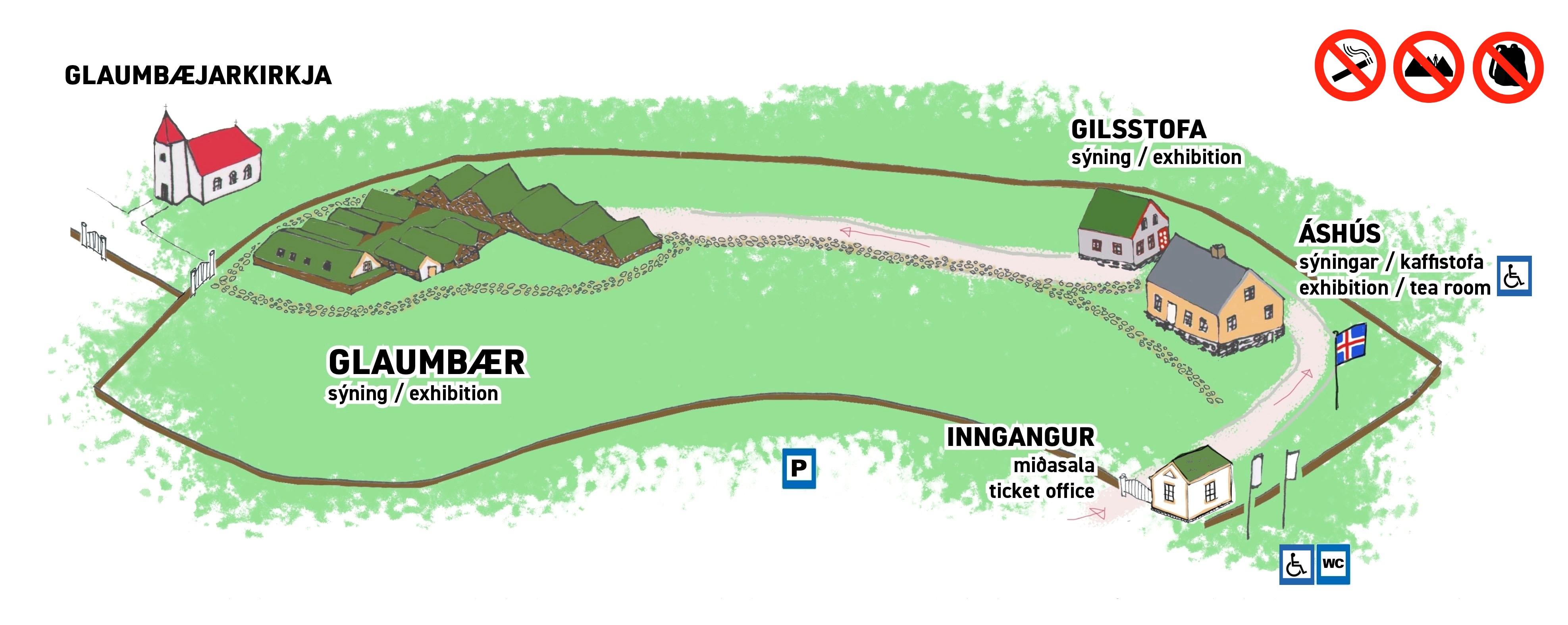Opening Hours:
- May 20 – September 20: Daily from 10:00 AM – 6:00 PM
- September 21 – October 20: Weekdays from 10:00 AM – 4:00 PM
- October 21 – March 31: By appointment
- April 1 – May 19: Weekdays from 10:00 AM – 4:00 PM
Winter Visits:
During the winter season (October 21 – March 31), visitors can ring the doorbell at the ticket office on weekdays between 10:00 AM and 4:00 PM to check if the museum can be opened. We recommend booking visits in advance to ensure staff availability.
Tickets 2025:
- 2.200 ISK – General admission
- 1.900 ISK – Groups (6+), students, senior citizens, and people with disabilities
- Free – Children (0-17 years), tour guides, FÍSOS, ICOM, and ICOMOS cardholders
Please note that combined tickets are available for Víðimýri Turf Church and Glaumbær.
Information about the 2026 price list can be found here.
Guided Tours:
- 2.200 ISK – General guided tour for larger groups, approximately 20 minutes (full price applies instead of the group rate).
- 15.000 ISK – Private guided tour, 45–60 minutes (fee is in addition to admission; maximum 12 people).
Group Bookings:
Please book group visits (6+ people) at least two days in advance via byggdasafn@skagafjordur.is or by calling +354 453 6173.
Guides and drivers do not need to pay admission to the museum.
Visitor Guidelines
Visitor guidelines for the museum area can be found here. We encourage guides to communicate these rules to their guests.
Special opening outside regular hours for groups (6+ people):
- Group rate + 15.000 ISK opening fee.
- Note: Advance booking is required.


